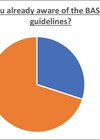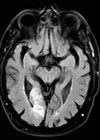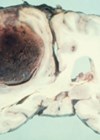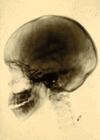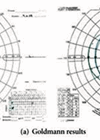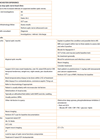Ophthalmology
Headache: the clue is in the eyes
A worrying cause of headache is raised intracranial pressure (ICP). Papilloedema is a vital clue for accurate diagnosis and performing fundoscopy is essential in detecting this sign. The authors review the use of fundoscopy in their own district general hospital....
The ocular manifestations of COVID-19: an overview of current literature
Although respiratory symptoms are the most frequent manifestation of COVID-19, multi-organ involvement has been demonstrated, including ocular manifestations. The author investigates how the eye can be affected. The SARS-CoV-2 virus responsible for the COVID-19 pandemic has presented a significant public...
Visual disturbance heralding stroke: are we seeing the signs in time?
Isolated visual symptoms may be an early presenting feature of stroke, and timely recognition of such atypical cases is important because treatment for stroke has a limited time-window of efficacy. Stroke occurs in approximately 150,000 people per year in the...
OBITUARY: James Finbarr (Barry) Cullen
On the sad passing of Eye News’ first editor and long-term contributor JF (Barry) Cullen, his friend Hector Chawla takes a look at the life and career of this effervescent character and giant of the ophthalmology world. Barry Cullen was...
COVID-19 and Charles Bonnet Syndrome
As COVID-19 rips through the country, it is – of course – imperative that we stay at home to try and prevent the virus spreading through the whole community. We are all aware of the need to take special care...
The Leicester Grading System for Foveal Hypoplasia
The University of Leicester Ulverscroft Eye Unit have published the first medical grading system named after the city of Leicester. Infantile nystagmus is characterised by constant and involuntary eye movements and affects 24 per 10,000 people [1]. Onset is usually...
Brain tumours in adults: the essentials for an ophthalmologist
The author provides a review of the common intracranial tumours in adults (other than pituitaries) which may present to an ophthalmologist. Primary malignant brain tumours comprise 3% of adult cancers but with an ageing population such tumours are becoming more...
Quality matters in the management of serious eye disorders
The author discusses the first quality standard for serious eye disorders from NICE and takes a look at new care models for enhanced service delivery. Patient backlogs pose risks to patient safety, with research showing that people are losing sight...
A pituitary tumour from 1927
The author shares a clinical case from Edinburgh Royal Infirmary’s archives. It is not often in the course of a clinical career that one gets the opportunity to review a patient who had been treated by a pioneer neurosurgeon some...
Pituitary adenoma causing compression of the optic chiasm
A 21-year-old girl presented to her general practitioner (GP) with a three-month history of headaches, becoming more frequent and associated intermittent vomiting that did not improve with simple analgesics. There was a strong family history of migraines. She was initially...
Isolated trochlear (fourth cranial) nerve palsy in an Asian population
The authors report on 35 consecutive new cases of isolated fourth cranial nerve palsy seen over a period of six months in one neuro-ophthalmology clinic in Southeast Asia, with emphasis on their aetiology and management. We report on 35 patients...
Optic nerve swelling – your survival guide (part 2)
In this second article we will discuss bilateral optic nerve swelling, its aetiology, various investigations and possible treatments. We will also discuss various protocols used in the management of suspected optic nerve swelling cases. (Part one of this topic available...


